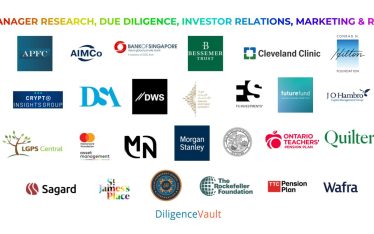What is a market?
mar•ket /′mar,ket/
noun
- A regular gathering of people for the purchase and sale of provisions, livestock, and other commodities.
- An area or arena in which commercial dealings are conducted.
Markets are essentially social constructs. For all the quantitative methods employed in the analysis of them, this social aspect, including shared history and expectations, forms the basis of the market and is central to the pricing mechanism.
We are currently in a period where longstanding assumptions and structures are being challenged and there is a clamor for change, from Brexit to the election of Donald Trump. When conventions and expectations are being re-examined, a robust framework for systematic analysis is very much needed. Emerging markets comprise a broad array of distinct economic, political and social structures. How best to gauge and compare the fund exposure factors in these markets? How to achieve an apples-to-apples comparison from mangoes and papayas?
Aspects of Sovereign Credit Analysis
By definition, sovereign credit ratings belong to governments (the United Mexican States, for example), rather than countries (Mexico); therefore, the institutions of a country are central to its creditworthiness. Moreover, an analysis or rating should be forward looking as well as globally comparable. A systematic analysis of sovereign credit exposures considers the strength and quality of a number of institutions and factors, as below. Each of these criteria should have a scale with clearly defined parameters, akin to those created by rating agencies.
Of the above categories, each can be divided into subcategories. For example, Fiscal strength includes such aspects as soundness/transparency of budget process, etc., as above. The savvy analyst considers, for example, that commodity prices are more difficult to predict than US interest rates. Analysis of the above categories and sub-categories will provide a good fundamental analysis of a portfolio’s risk exposure.
Legal System – Further Caveats
As the US embarks on its tightening cycle, heralding the end of an extended period of basically free money in much of the world, there will be more consequences for weak or failing businesses globally. Legal processes will come into play to a greater extent. Indeed, it seems that the ability to assess financials needs to be accompanied by a top-notch legal team in case of default and the need for a workout. How can an analysis be structured to take investment decisions and accurately gauge the risk/reward trade-off in a systemic way?
Local Market Investing
Knowledge and experience with the local courts and legal systems are critical for successful local investments in emerging markets. International investors may choose to avoid those concerns by insisting on bond indentures under US or UK law so that they have access to sophisticated legal systems and judges who have experience with complex issues such as cramdowns. However, investors who want the most sophisticated jurisdictions must be prepared to pay the disproportionately high costs of New York or London legal fees, which can materially shrink any amount the investor hoped to recoup in a restructuring. Furthermore, holdout value has increased in the aftermath of Argentina’s default almost two decades ago, and that is problematic for restructurings.
For those who invest locally, it is important to have confidence in the legal system; some local judiciaries are notoriously corrupt or inefficient. If it takes a decade or more to come to terms in a workout, the opportunity cost of an investment can become prohibitive, even in the case of an eventual successful outcome. There may be laws on the books, but you want to know that there is good legal precedent, as well, which means a body of legal cases with reasonable and consistent outcomes. If a law is on the books but has not been tested, it is not clear if it will be effective. Moreover, if a country has civil law, like Brazil, that means there is not necessarily any deference for legal precedent, and each judge can have his own opinion.
In countries with reputations for poor governance, the potential for outright fraud exists, certainly including governmental entities and SOEs. The longer a restructuring plays out, the more likely the financial needs of an investor may require working with intermediaries or financial agents who are bad actors.
Bankruptcy
The concept of rehabilitation for businesses (and people/consumers) is important because entities and people do fail. An investment jurisdiction should have bankruptcy law with a clear process that evolves in a reasonable time frame. Governments increasingly seem to understand that not having bankruptcy law and process is a drag on economic growth. Even in the case of a successful outcome, the process always takes longer than an investor wants, and the investor does not always have the luxury of time to wait for an outcome. This scenario obviously can have a significant adverse impact on a portfolio.
Concept of the Sovereign Ceiling
While there is precedent, piercing of the sovereign ceiling is by no means common. The first instances of corporate issuers being assigned credit ratings superior to those of their sovereign were in 1997 when S&P relaxed the criteria for three dollarized economies in Latin America. Then during the commodities supercycle there was increased instance of corporates achieving a higher credit rating than their sovereigns as some of the larger commodity players enjoyed extremely strong economic tailwinds. However, the bursting of the commodities bubble uniformly has resulted in downgrades and distress among the erstwhile stars, and largely a restoration of the sovereign ceiling in practice.
Factors in Corporate Credit Analysis
A comprehensive approach to corporate credit analysis starts from a macro level. This includes looking at the overall economy in which the company operates, as well as industry characteristics. The government may or may not play a significant role as regulator or in provision of licenses or monopolies. Porter’s five forces assist in forming a reasonable template for industry analysis. Barriers to entry is the strongest of the five forces.
Analysis of the corporate includes the Five C’s of credit analysis, as above, on this micro level.
Inclusion, Governance and Transparency
Although markets may be segmented into developed vs. emerging, recent political events across developed and emerging markets alike remind us that there is actually a spectrum on which both developed and emerging markets sit. There is no formal divide between them other than the social construct of markets. In fact, the application of an analytic framework as outlined above may yield some surprising results.
The book “Why Nations Fail” by Daron Acemoglu and James Robinson provides many examples of how close the two are. The main distinguishing factors of developed markets appear to be institutions that are inclusive, transparent, and democratic with broad distribution of power throughout society. Emerging markets in contrast are characterized by institutions that tend to result in concentrations of wealth and power, as well as fragmented resources. A rigorous analytic framework that provides for systematic due diligence of institutions and economic entities can make exotic animals of a different stripe appear more like birds of a feather to the perceptive, and likely profitable, investor.



